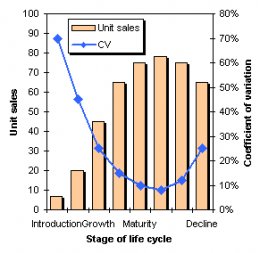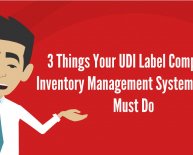
Safety stock inventory control Systems
 Many argue that the focus point (and perhaps the linchpin) of successful supply chain management is inventories and inventory control. So how do companies manage their inventories? What factors drive inventory costs? When might it make sense to keep larger inventories? Why were some companies quicker to pursue inventory reduction strategies than other firms?
Many argue that the focus point (and perhaps the linchpin) of successful supply chain management is inventories and inventory control. So how do companies manage their inventories? What factors drive inventory costs? When might it make sense to keep larger inventories? Why were some companies quicker to pursue inventory reduction strategies than other firms?
The Evolution of Practices and Technology for Better Inventory Control in the Supply Chain
A few decades ago, some companies adopted and formed Efficient Consumer Response to shift their focus from controlling logistical costs to examining supply chains. Customer service also became a key competitive differentiation point for companies focused on value creation for end consumers. In such an environment, firms hold inventory for two main reasons, to reduce costs and to improve customer service. The motivation for each differs as firms balance the problem of having too much inventory (which can lead to high costs) versus having too little inventory (which can lead to lost sales).A common perception and experience is that supply chain management leads to cost savings, largely through reductions in inventory. Inventory costs have fallen by about 60% since 1982, while transportation costs have fallen by 20%. Such cost savings have led many to pursue inventory-reduction strategies in the supply chain. To develop the most effective logistical strategy, a firm must understand the nature of product demand, inventory costs, and supply chain capabilities.
 Firms use one of three general approaches to manage inventory. First, most retailers use an inventory control approach, monitoring inventory levels by item. Second, manufacturers are typically more concerned with production scheduling and use flow management to manage inventories. Third, a number of firms (for the most part those processing raw materials or in extractive industries) do not actively manage inventory.
Firms use one of three general approaches to manage inventory. First, most retailers use an inventory control approach, monitoring inventory levels by item. Second, manufacturers are typically more concerned with production scheduling and use flow management to manage inventories. Third, a number of firms (for the most part those processing raw materials or in extractive industries) do not actively manage inventory.
Many industrial manufacturing firms do not actively manage inventory. This does not mean that they ignore inventory. Rather, they hold large inventories because any potential savings from inventory reductions are far outweighed by the inventory-induced reductions in production, procurement, or transportation costs. Often economies of size cause long productions runs which lead to inventory accumulation. Simultaneously, seasonality leads to inventory buildups of key inputs and outputs. Economies in procurement such as forward buying and quantity discounts increase inventories. Similarly, unit trains and other forms of bulk shipping discounts contribute to inventory buildups.

















